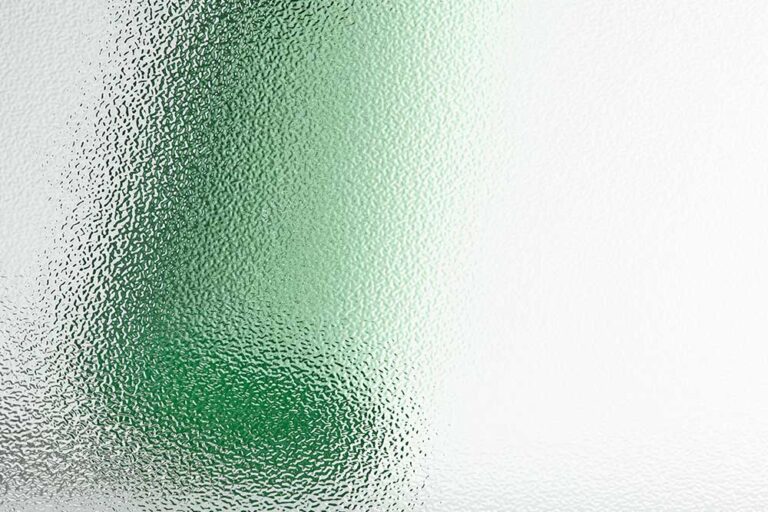In the world of architectural design and interior decor, sandblasted glass stands out as a versatile and visually appealing material. Whether you’re an architect, interior designer, or simply someone interested in home aesthetics, understanding sandblasted glass can enhance your creative toolkit. In this comprehensive article, we’ll delve into the intricacies of sandblasted glass, its manufacturing process, advantages, and various applications.
What is Sandblasted Glass?
Sandblasted glass, also known as frosted glass, undergoes a unique treatment process to achieve its distinctive appearance. Here’s how it works:
- Abrasive Treatment: Sandblasted glass is created by treating the glass surface with an abrasive material, such as sand or aluminum oxide. The process involves propelling fine particles at high speeds onto the glass using compressed air.
- Frosted Appearance: The result is a frosted or opaque appearance that diffuses light, creating a translucent effect. This unique texture provides privacy while still allowing natural light to filter through.
How Sandblasted Glass is Made
The sandblasting process involves several steps:
- Glass Preparation: The glass surface is thoroughly cleaned to remove any dirt or debris. After washing and drying, it’s ready for the next stage.
- Stencil Creation: A self-adhesive vinyl stencil or mask is applied to the glass surface. This stencil is cut into the desired shape or design using either an automatic glass cutting table or a manual cutting tool. The stencil adheres well and creates a tight seal around the edges of the design.
- Actual Sandblasting: Fine abrasive materials (such as sand or aluminum oxide) are propelled at high speeds onto the glass surface. The particles etch or frost the glass, resulting in the desired frosted, matte finish.
Advantages of Sand Blasted Glass
Privacy
Sandblasted glass provides privacy without compromising on natural light. Additionally, it’s an excellent choice for areas like bathrooms, conference rooms, and office partitions. This versatile solution seamlessly blends functionality with aesthetics, offering a practical yet elegant alternative to traditional opaque materials. Moreover, sandblasted glass enhances spatial dynamics by maintaining an open feel while delineating private spaces. As a result, it fosters a sense of connectivity and transparency within interior environments, promoting productivity and well-being.
Durability
The frosted finish is durable and resistant to wear, making it suitable for both residential and commercial spaces. Furthermore, its longevity ensures cost-effectiveness over time, as it requires minimal maintenance compared to other privacy solutions. This durability makes sandblasted glass an ideal choice for high-traffic areas such as entryways, stairwells, and corridors. Additionally, its versatility allows for seamless integration into various architectural styles, from contemporary to traditional. As a result, sandblasted glass remains a popular and practical choice for architects, designers, and property owners alike.
Aesthetic Appeal
Sandblasted glass adds elegance and sophistication to any setting. Moreover, its unique texture stands out and complements various design styles. This distinctive feature allows it to seamlessly integrate into both modern and traditional environments, enhancing the aesthetic appeal of any space. Whether used in residential homes, commercial buildings, or hospitality venues, sandblasted glass elevates the ambiance, creating a sense of refinement and luxury. Additionally, its versatility extends beyond decorative purposes, as it also offers practical benefits such as privacy and light diffusion. As a result, sandblasted glass remains a timeless choice for architects and interior designers seeking to achieve both beauty and functionality in their projects.
Easy Maintenance
Cleaning sandblasted glass is straightforward—just wipe it down with a damp cloth. Additionally, this low-maintenance material eliminates the need for specialized cleaning products or techniques, simplifying upkeep for homeowners and facility managers alike. Furthermore, its smooth surface facilitates quick and effortless cleaning, ensuring that the glass maintains its pristine appearance with minimal effort. Consequently, sandblasted glass stands out as a practical and convenient solution for maintaining a clean and visually appealing environment.
Versatility
From doors and windows to decorative panels and signage, sandblasted glass finds applications in diverse contexts. Moreover, its versatility extends beyond traditional architectural elements, allowing for creative uses in interior design and art installations. This adaptability enables designers and artists to explore innovative ways of incorporating sandblasted glass into their projects, adding visual interest and depth to spaces. Additionally, the ability to customize patterns and designs further enhances its appeal, making it a popular choice for creating unique and memorable experiences. As a result, sandblasted glass continues to inspire creativity and imagination across various industries and applications.
Sand Blasted Glass Designs
Here are some creative ways to use sandblasted glass:
- Doors and Windows: Sandblasted glass doors and windows offer privacy while allowing light to filter in.
- Shower Glass Doors: Transform your shower enclosure with sandblasted glass for a spa-like feel.
- Office Partitions: Create functional yet visually appealing office spaces using sandblasted glass partitions.
- Decorative Glass Panels: Incorporate sandblasted glass into interior decor elements like room dividers or cabinet doors.
- Signage: Sandblasted glass signs are eye-catching and professional.
Sand Blasted Glass vs. Acid-Etched Glass
While both techniques create a frosted appearance, sandblasted glass employs high-speed abrasive particles, whereas acid-etched glass relies on chemical treatments. This distiction is crucial, as it determines the method’s durability and environmental impact. Sandblasted glass offers a rugged finish suitable for high-traffic areas, while acid-etched glass provides a smoother surface with intricate detailing. Consequently, architects and designers must carefully consider the specific requirements of each project when selecting between these two methods. Sandblasting offers more design flexibility and is often preferred for custom patterns.
For personalized glass solutions that exceed expectations, Glass World can be your trusted partner. Get in touch with us today to explore our extensive range and find the ideal glass products for your projects

